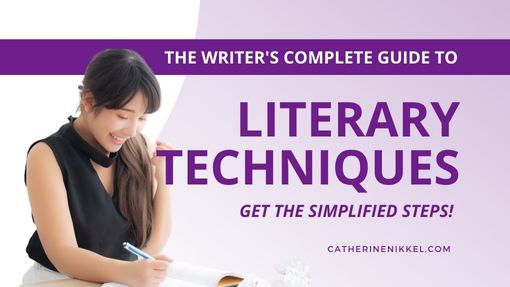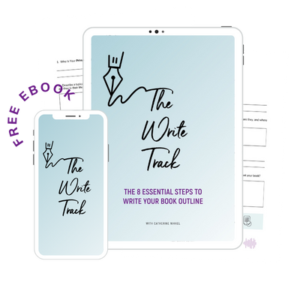When it comes to literature, there’s much more than meets the eye. What makes a story come alive is a complex weave of literary techniques, words, and devices that heighten the reader’s experience and provide deeper meaning. This comprehensive guide will dive into the fascinating world of literary techniques, from the most common devices to their profound impact on literature.
The Essentials of Literary Devices
Literary devices are an integral part of literature. They lend depth and complexity to narratives, adding a creative spin to the writer’s message. These devices can be as simple as a metaphor or as intricate as a full-fledged allegory. Literary devices are not just limited to poetry or high literature but have their place in all forms of creative writing. Understanding these most common literary devices will offer insights into appreciating literature at a deeper level and improving your writing.
Diving into the Common Literary Devices
Metaphors
In the realm of literary devices, metaphors hold a significant position. By drawing a comparison between two seemingly different meanings and unrelated elements, metaphors provide a fresh perspective, infusing a deeper meaning into the text. For instance, in Romeo and Juliet, Shakespeare’s metaphor “Juliet is the sun” doesn’t imply a literal meaning but rather the warmth and light Juliet brings into Romeo’s life.
Irony
Irony is another powerful device, acting as a twist of expectations. In its three forms—verbal, situational, and dramatic—irony introduces a gap between what appears and what is in real life. A classic example of dramatic irony is present in Sophocles’ Oedipus Rex, where the audience knows of Oedipus’ fate before the character himself does.
Simile
Similes, like metaphors, involve comparison. However, they use “as” or “like” to make the comparison explicit. This device often paints vivid images, like in the phrase “as brave as a lion,” where bravery is compared to a lion’s ferocity.
Imagery
Imagery appeals to the five senses, helping the reader visualize and experience the narrative more vividly. It’s often what makes a reader feel part of the story, absorbing the aroma of the setting or feeling the character’s heart pound in a tense scene.
Foreshadowing
Foreshadowing is a literary device that hints at events to come, often building suspense in the narrative. It’s a subtle device that sets the stage, preparing the reader for what’s to come. An example is the ominous weather in Charles Dickens’ A Tale of Two Cities, foreshadowing the upcoming turmoil.
Personification
Personification is the attribution of human characteristics to non-human entities. It breathes life into the inanimate and abstract, making them more relatable. It can be as simple as “the wind whispered through the trees,” imbuing the wind with human-like qualities of whispering.
These devices and numerous others contribute to the layers of meaning in a text. They draw readers in, engaging them with the narrative, the characters, and the themes. But the beauty of these devices goes beyond just engagement and entertainment—they also open avenues for critical thinking, inviting readers to analyze, interpret, and question.
The Impact of Literary Devices on Literature and Readers
Literary devices are the lifeblood of literature. They imbue a text with deeper meanings, heighten its aesthetic qualities, and enhance the reader’s overall experience. They are tools that allow writers to communicate complex ideas and emotions evocatively, engagingly, and concisely.
The use of literary devices like irony, for instance, can reveal truths about human nature, society, and life in ways that can be humorous, tragic, or enlightening. In the hands of a skillful writer, literary devices can transform simple stories into profound explorations of the human condition.
The Versatility of Literary Devices in Different Genres
Different genres of literature make use of different literary devices to convey their unique narratives and themes. Whether it’s the vivid imagery in a children’s book, the biting satire in a political novel, or the deep metaphors in a piece of poetry, each genre of story employs literary devices to its advantage and to different effects.
Prose
In prose, literary rhetorical devices are often used to build a narrative, develop characters, and create a sense of place and time. For instance, the opening line of Charles Dickens’s “A Tale of Two Cities” is a famous example of anaphora, a rhetorical device involving the repeated use of a word or phrase at the beginning of successive sentences: “It was the best of times, it was the worst of times, it was the age of wisdom, it was the age of foolishness…”. This creates a rhythm and reinforces the juxtaposition of extremes, reflecting the turbulent times during the French Revolution.
Poetry
In poetry, literary devices help to create rhythm, evoke emotion, and paint vivid pictures in the reader’s mind. Metaphors and similes are examples commonly used to convey abstract concepts through concrete images. For instance, in Robert Frost’s “The Road Not Taken,” the diverging paths in the woods are a metaphor for the choices we make in life.
Drama
In drama, devices like dramatic irony create tension and suspense, enhancing the viewer’s experience. For instance, in Shakespeare’s “Romeo and Juliet,” the audience is aware of Juliet’s faked death while Romeo isn’t, which results in tragic consequences.
Fiction
Literary devices help create a believable world, build complex characters, and convey themes in fiction. For instance, George Orwell’s “Animal Farm” is an allegorical novel that uses animals on a farm to represent the events leading up to and during the Russian Revolution.
Harnessing Literary Devices in Your Own Writing
Literary devices aren’t just for famous authors—they’re tools that all writers can use to enhance their writing. Whether you’re crafting a short story or engaging in creative writing, understanding and using these writing tools can help your words come alive and maintain your reader’s attention.
- Metaphors and Similes: Use metaphors and similes to make comparisons that bring clarity and freshness to your ideas.
- Imagery: Employ imagery to engage your reader’s five senses. Make them see, hear, touch, smell, and taste what your characters are experiencing.
- Irony: Use irony to create surprising contrasts between expectations and reality. This can add an element of surprise or humor to your writing.
- Foreshadowing: Employ foreshadowing to build suspense and anticipation. This could be subtle hints or explicit clues about what’s to come.
- Personification: Use personification to make your descriptions more vivid and relatable. You can create imagery that resonates with readers by giving human traits to non-human things.
Incorporating these devices into your writing can take your prose from plain to compelling, making your stories more engaging and your ideas more vivid. You’ll find your unique style and voice as a writer with practice.
These devices are like colors on a painter’s palette—each one adds a unique shade to the narrative, creating a story that resonates with readers. So, as you journey in your writing adventure, remember to experiment, explore, and, most importantly, enjoy the process. After all, every other word or phrase, word or phrase alone, and literary device you choose is a brushstroke in the larger canvas of your narrative.
Building Suspense and Dramatic Irony
Continuing our exploration of common literary devices, let’s delve into dramatic irony, a common literary device that can help writers create suspense and keep the reader’s attention. This is when the audience knows something that the characters involved in the story don’t, thus creating tension.
Consider Romeo and Juliet, for instance. Shakespeare employs dramatic irony to this point of great effect, as the audience is aware of Juliet’s feigned death, while Romeo, tragically, is not. This knowledge creates an emotional response in the reader, significantly intensifying the impact of the story’s ending.
On a lighter note, this device is also frequently used in children’s books. In “The Gruffalo,” the mouse’s claims about the Gruffalo are known to be true by the readers but not by the other characters. This increases the readers’ engagement, making them eager to read further.
Metaphor and Figurative Language
The use of metaphors and other forms of figurative language is another important element in creative writing. They are versatile literary devices that can provide a deeper meaning than the literal meaning of words, making prose more evocative and descriptive.
A classic example of informal language is the opening line of Charles Dickens’s “A Tale of Two Cities”: “It was the best of times, it was the worst of times…” Here, Dickens isn’t referring to actual timeframes but is using them metaphorically to encapsulate the idea of the contradictions and extremes within society during the French Revolution.
Moreover, consider the metaphor used in F. Scott Fitzgerald’s “The Great Gatsby”: “So we beat on, boats against the current, borne back ceaselessly into the past.” This phrase isn’t about boats or currents but about human nature, the struggles of life, and our relationship with the past.
Personification: Bringing Inanimate Objects to Life
Personification is another common literary device where writers give human traits or human-like qualities to non-human things, whether it’s a character, an inanimate object, an animal, or an abstract idea or concept. This device can provoke a strong emotional response and help the reader understand complex ideas by attributing relatable human attributes to them.
In George Orwell’s “Animal Farm,” animals are given human attributes to provide a critique of the Russian Revolution. Similarly, the portrayal of ancient Rome as a character in itself in many historical novels is a great example of how personification can bring a setting to life, enhancing the reader’s connection to the story.
These are just two examples of the many literary devices that can be used to enhance creative writing. By integrating these tools in your own creative writing, too, you can convey complex ideas in an engaging way, create a deeper connection with your readers, and bring your stories to life in a way that literal language often can’t.
Irony: Playing With Expectations
Another significant literary device is irony. Irony, in its many forms, adds a layer of sophistication to writing and offers different ways to deliver deeper meaning, enhance the narrative, and engage readers. The three most common forms are verbal, dramatic, and situational irony.
Verbal irony is when the writer says one thing but means another, often a repeated word for a humorous or emphatic effect. For instance, imagine reading a children’s book where a character says, “Oh, what a beautiful day!” while standing in a heavy downpour.
As already mentioned, dramatic irony happens when the reader knows something that a character doesn’t. It creates a gap between the character’s understanding and the reader’s, building suspense.
Lastly, situational irony occurs when the actual result of a situation is completely different from what was expected. A classic example of this is O. Henry’s short story, “The Gift of the Magi,” in which a young couple sells their most prized possessions to buy gifts for each other, only to find that the gifts are now useless.
Symbolism and Allegory: Concealing and Revealing
Symbolism and allegory are the two most common literary devices allowing writers to convey complex ideas, critiques of society, or philosophical concepts indirectly. In this case, an object, character, or event represents something else.
One of the most famous examples is Orwell’s “Animal Farm,” where the events and characters are allegorical representations of the Russian Revolution. Similarly, the green light in “The Great Gatsby” is a symbol of Gatsby’s longing for Daisy and, more broadly, the American Dream.
Imagery: Painting with Words
Imagery is a powerful literary device that employs ‘real words’ to evoke the reader’s five senses, thereby making a scene or an idea more vivid and relatable. Descriptive phrases that help the reader imagine the colors, sounds, smells, tastes, and feel of an object, abstract concept, or scene are the essence of this literary device.
A famous example of vivid imagery comes from Ernest Hemingway’s “The Old Man and the Sea”: “He could see the prisms in the deep dark water and the line stretching ahead and the strange undulation of the calm.”
Hyperbole: Exaggeration for Effect
Hyperbole is an exaggerated statement or claim used to emphasize a point or to create a grander effect. For instance, saying, “I’m so hungry I could eat an entire horse,” is a hyperbole, as it dramatizes the speaker’s hunger.
Incorporating these literary devices in your writing can significantly enhance the reader’s engagement and comprehension. Experiment with them, and see how they can bring a new dimension to your narrative.
Foreshadowing: Dropping Hints about the Future
Foreshadowing is another important literary device writers often use to create tension or build suspense in their stories. It’s a hint or clue about what will happen later in the narrative, giving readers a taste of what’s to come without revealing the entire plot.
Charles Dickens was a master of foreshadowing, for example, as seen in his novel “A Tale of Two Cities.” His opening line, “It was the best of times, it was the worst of times,” subtly hints at the forthcoming conflict and duality that characters in the novel will experience.
Personification: Giving Human Attributes to Non-Human Things
Personification is a type of figurative language that assigns human-like qualities, traits, or attributes to inanimate objects, animals, or abstract concepts. Doing so can evoke a stronger emotional response and help the reader understand and relate to the writer or subject matter on a deeper level.
For instance, in “Romeo and Juliet,” William Shakespeare personifies death as a lover who keeps Juliet away from Romeo. This creates a powerful image and underlines the tragic nature of their love story.
Metaphor and Simile: Drawing Interesting Comparisons
Metaphors and similes are two of the most common literary devices used in both prose and poetry. They involve comparing one thing to another to make the description more vivid and relatable. While a metaphor directly states the comparison (e.g., “Time is a thief”), a simile uses “like” or “as” to make the comparison (e.g., “She is as innocent as an angel”).
Alliteration and Assonance: Playing with Sound
Alliteration and assonance are literary devices that play with the sound of words to add rhythm, mood, or a point of emphasis to a piece of writing. Alliteration is the repetition of the initial consonant sound in a series of words (e.g., “Peter Piper picked a peck of pickled peppers”), for example. At the same time, assonance is the repetition of vowel sounds in a line of text or poetry (e.g., “The rain in Spain falls mainly on the plain”).
In conclusion, the use of literary devices can turn an ordinary piece of writing into a creative and engaging narrative. These tools allow writers to convey ideas in new and exciting ways, adding depth to their stories and characters. As a writer, exploring these devices can help you better understand how to captivate your readers and make your own writing more effective and impactful.
Frequently Asked Questions
Q1: What are literary devices?
A1: Literary devices are tools used by writers to convey their messages and ideas in a creative way. They include techniques like metaphor, irony, personification, alliteration, foreshadowing, and many other examples, each serving a unique purpose in storytelling.
Q2: Why are these literary elements and devices important in writing?
A2: Literary devices add depth and richness to a story. They help writers express complex ideas in an engaging and relatable way, captivate readers’ attention, and evoke emotional responses.
Q3: What is an example of a metaphor?
A3: A classic example of language as a metaphor is “Time is a thief.” Here, time is being directly compared to a thief, with language suggesting it steals moments from us without us noticing.
Q4: How does foreshadowing contribute to a story?
A4: Foreshadowing is a device that hints at events to come in a story. It can build suspense and anticipation, engage the reader, and make a narrative more compelling.
Q5: What is an example of personification?
A5: In William Shakespeare’s “Romeo and Juliet,” death is personified as a lover who keeps Juliet away from Romeo. This gives a human quality to death, making it a more relatable concept.
Use your Voice, Make an Impact.
Catherine x

Email: catherine@catherinenikkel.com
Resources
What type of Content Creator are you? Take the Quiz! – 4 different types of creators. Which one are you?
Need help to tell your story in your own voice? Let’s make it happen. Schedule a consultation with me here






